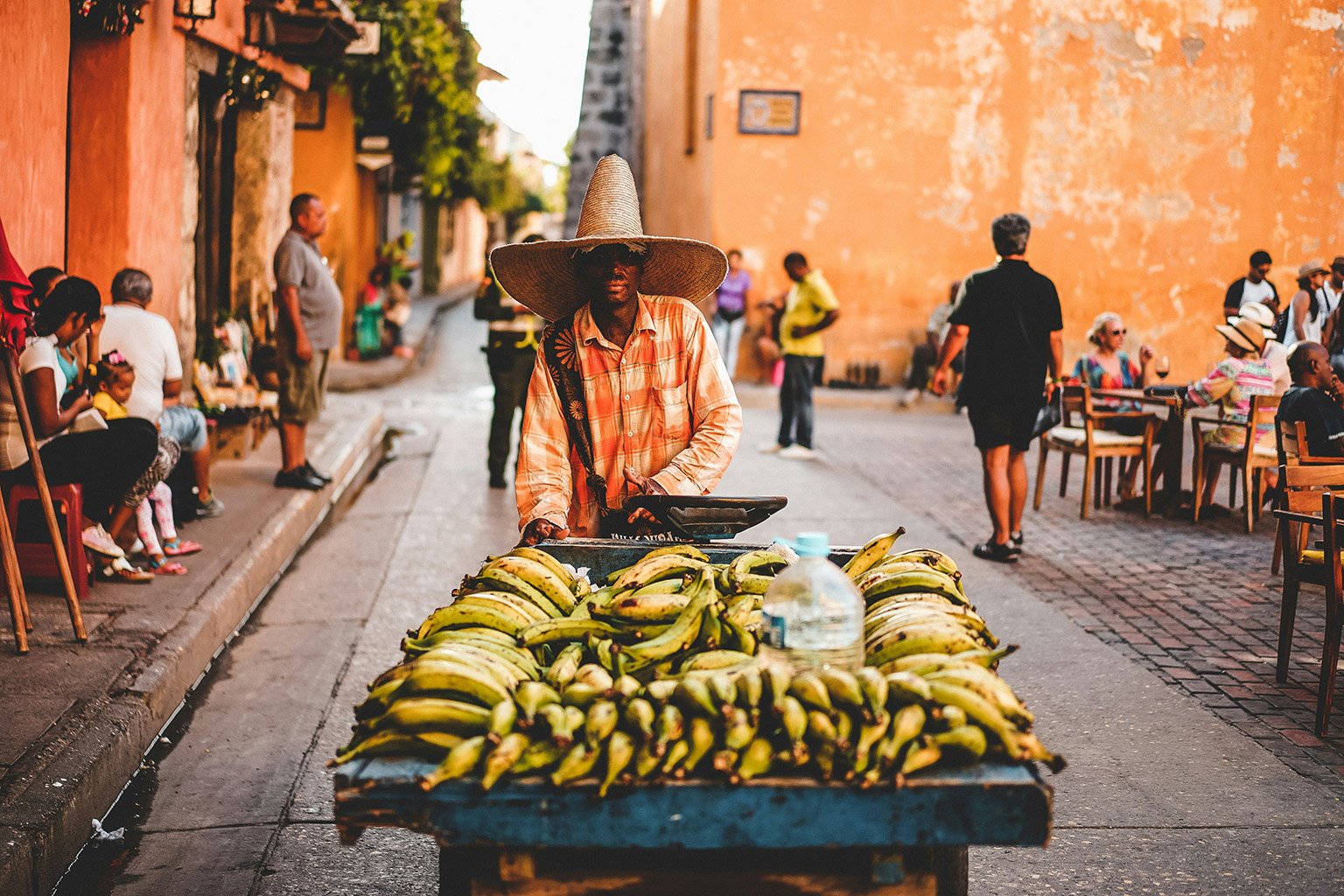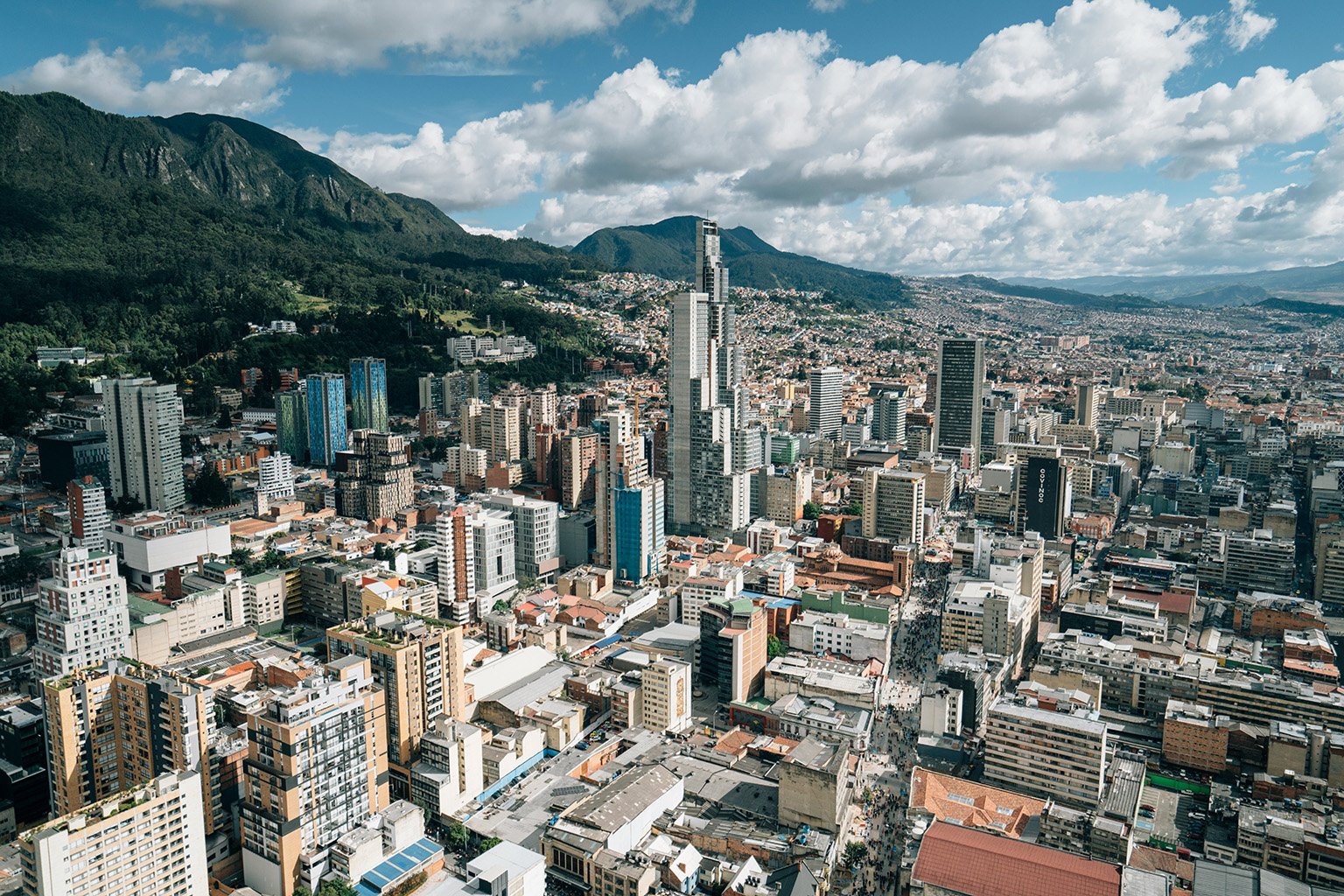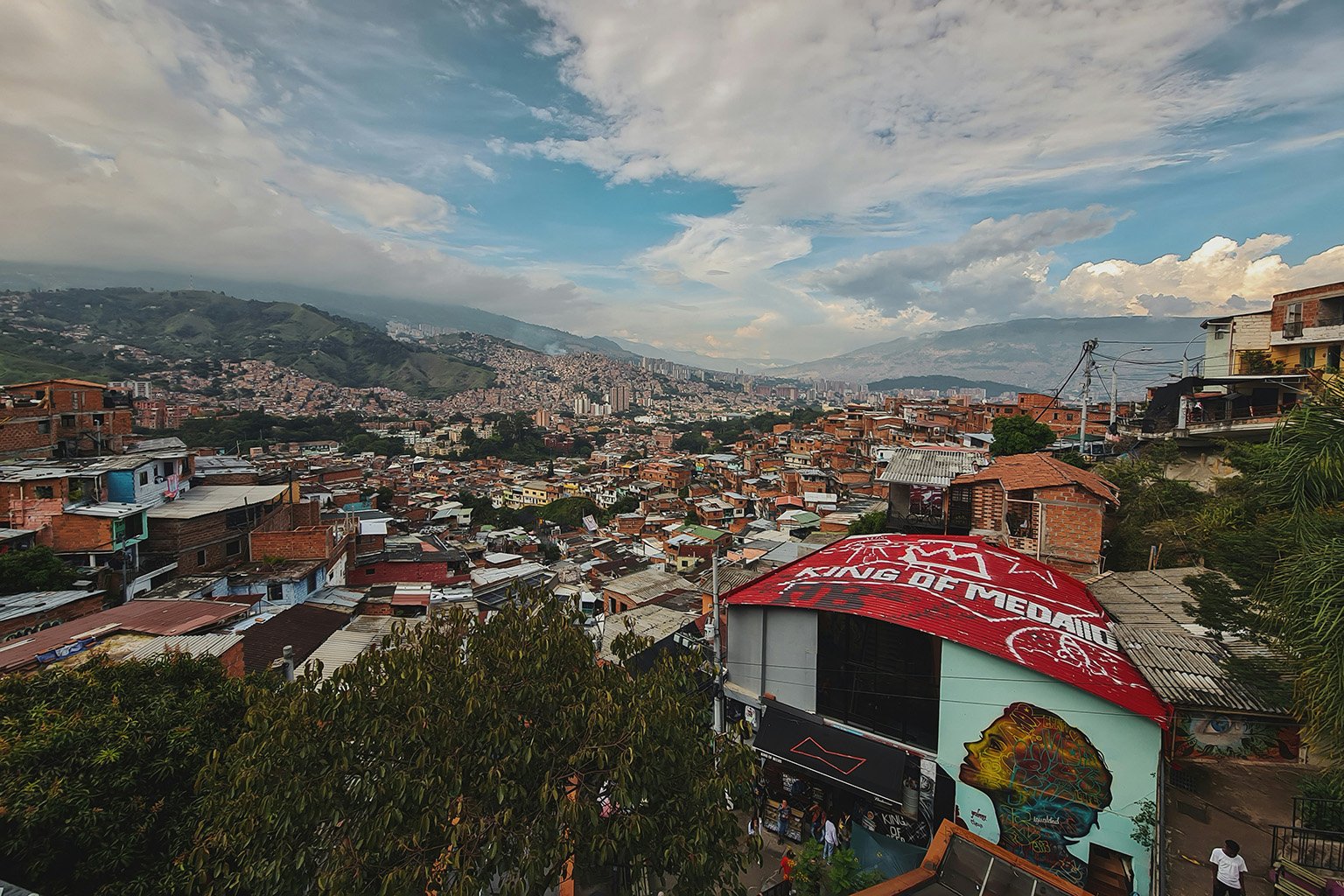SOUTH AMERICA
12 min read
Colombia isn’t just a postcard — it’s a real place where everyday life hits you with contrasts: stunning beauty meets occasional chaos, and warmth mingles with challenges. If you’re curious about what living in Colombia really means, let’s unpack the good, the tricky, and everything in between.
……………………………..
Maybe you’ve dreamed of living in another country, or perhaps you want to experience a different culture. Maybe you want to get away from the chaos in your home country. If you’re looking for an affordable, beautiful place to call home, living in Colombia offers many benefits.
This Spanish nation has long been plagued by safety concerns arising from the reputation of Pablo Escobar and others like him. It’s made it difficult for many foreigners to see the beauty of this country, however, that was the past. Today, the beautiful country of Colombia has risen above the mainstream reputation and is now considered a good place to live.
This vibrant Latin American country has something for everyone, from stunning beaches and lush jungles to cosmopolitan cities and snow-capped mountains. And with its hospitable locals and year-round warm weather, you’ll be hard-pressed to find a better place to call home. But there are also some drawbacks you should know before making the move.
In this post, we’ll take a deep dive into the pros and cons of living in Colombia, based on some of our own experiences and important topics you’ll need to know before you choose Colombia to be your home. So, if you’re curious about life in Colombia, keep reading!
Table of Contents
The Pros of living in Colombia
1. How can I stay in Colombia long-term?
If you’re considering a fresh start in Colombia, you can take several steps for a long-term stay. One option is to apply for a long-term visa, allowing you to immerse yourself in Colombian culture.
Various residency visas are available for foreigners. The tourist visa is common for short visits, permitting stays of up to 90 days, extendable for another 90 days. The visa you need depends on your nationality and intended stay. Some nationalities can enter without a visa, while others require a tourist visa. For longer stays, consider a student or work visa.
For permanent residency, options include marrying a Colombian citizen, obtaining a retirement visa, or investing a specified amount in the country. Each visa type has specific requirements, so consult the Colombian embassy or consulate in your home country for guidance. Some nationalities may also need to provide additional documentation or undergo a background check.

A local vendor selling bananas from a cart in the streets of Cartagena, Colombia.
2. What is the weather like in Colombia year-round?
Colombia is an extremely bio-diverse country with incredible natural beauty. From the Caribbean coast with its warm tropical weather to the Andes Mountains where you can enjoy temperate spring-like conditions every month.
The average temperature throughout most parts of this Latin American country is around 26°C (79 °F). There are two main seasons – the dry from December to March and the wet from April through November – which means you can enjoy a tropical climate all year long!
3. Cost of Living in Colombia: What Does It Take to Live Comfortably?
As a monthly budget, you can live a relatively comfortable lifestyle for around $900 to $2000.
The daily cost of living in Colombia is inexpensive in comparison to other countries in South America. Yes, big cities such as Bogota or the Caribbean coast might be pricey, but if you look at smaller towns and villages, it becomes much more affordable.
Relative to other countries, when considering South America as a whole, Colombia is one of the most low-cost places to live. Though like everywhere costs have been gradually rising over recent years. However, many can maintain a high standard of living solely off their social security income.
Before you pack your bags, make sure you’re not making these 7 common mistakes. Grab the free guide and move abroad with confidence.

The vibrant city of Bogotá, Colombia, with the Andes mountains in the background.
4. What Is Daily Life Like When Living in Colombia?
You’ll experience firsthand how Colombians live a slower-paced lifestyle. Throughout Latin America and especially, Colombia, families are particularly important, much like how families used to be during the 1950s and 1960s era when large family gatherings happened often.
For Colombians, it’s common for big Sunday dinners at grandma´s house or large parties where all their relatives gather. They also manage work life and recreational time well by ensuring employees have a decent lunch break– offices usually close from noon until 2 p.m. so people can go home to eat their big meal of the day.
Colombia is a true gem of natural beauty, offering a diverse range of landscapes that are sure to captivate any nature lover.
The majestic Andes mountains provide breathtaking views and exciting hiking trails for those eager to explore.
Meanwhile, the lush Amazon rainforest bursts with vibrant wildlife and unique ecosystems, offering a one-of-a-kind adventure.
And let’s not forget the stunning Caribbean coastline, where pristine beaches invite you to relax or dive into water sports.
Colombia’s culture is a vibrant mix of European, African, Caribbean, and indigenous influences. This rich heritage comes alive in its music, dance, art, and festivals, highlighting unique rhythms and traditions. Each culture adds its own flavor, creating a dynamic and diverse atmosphere.
From the lively cumbia beats to the intricate craftsmanship of Indigenous communities, Colombia’s cultural diversity is a proud reflection of its people’s creativity and resilience.
Colombians are famous for their warm and friendly nature, creating an inviting atmosphere that helps visitors feel right at home when living in Colombia.
Their genuine hospitality and cheerful demeanor make it easy to connect with locals, enhancing the overall experience of anyone exploring this vibrant country.
Although many people in America have cars, far fewer people in Colombia own them — around one out of five.
This means that cities and small villages are designed to be more navigable by foot as everything that is needed can be found within four blocks of where people live.
Many Colombian cities, such as Medellin and Bogota, have much better public transportation systems than other Latin American metropolises.
Medellin’s metro has made life significantly easier for residents. With the addition of bus lines and cable cars, Medellin is now one of the most innovative cities in terms of public transport in Latin America.
The food is one of the best things about living in Colombia!
The fertile soil produces an unbelievable variety of fruits. Lulo, Guanabana, and Chupa-Mango are just a few examples of the exotic fruits that grow here.
Colombian cuisine is delicious and diverse, with each region having its unique dishes.
Whether you’re looking for a hearty plate of beans and rice or a light seafood dish, you’ll be able to find something to your taste in Colombia.
5. Does Colombia Have Good Healthcare for Expats?
Many expats living in Colombia enjoy access to top-notch healthcare at an affordable cost. The World Health Organization ranks Colombia’s healthcare system 22nd out of 191 countries, ahead of both Canada (#30) and the United States (#37).
With twenty of Latin America’s top forty-nine hospitals located here, Colombia has become a hub for medical tourism. Expats can access the public health insurance plan with a national ID card (cédula), and there are no age limits or exclusions for preexisting conditions after a waiting period. Monthly premiums are based on income, and diagnostic visits, including lab tests and imaging, are available at affordable rates through a tiered co-pay system.

Towering wax palm trees in Colombia’s breathtaking Cocora Valley.
6. Why Living in Colombia Is a Great Base for Travel?
Colombia’s central location in Latin America makes it an ideal travel hub to destinations like Peru, the Caribbean, Mexico, Argentina, and Ecuador. While airports in Cartagena and Medellín are smaller compared to Bogotá or Panama City, new direct flights are added regularly.
Traveling to the U.S. is easy, with direct flights from Bogotá and Medellín to various east coast cities. For U.S. residents, flights to Colombia are much shorter than those to Europe or Asia, so visiting family and friends is quick and convenient.
In just about three hours, you can fly from Colombia to Florida, making same-day visits to places like Boston or New York possible.
The Cons of Living in Colombia
While Colombia has a lot to offer, there are also some drawbacks to living there.
Safety can be a concern in certain parts of the country, especially in urban areas where issues like theft or petty crime can occur. While violent crime does exist, it’s not something most expats or travelers typically encounter in their daily lives.
As with anywhere, staying aware of your surroundings and taking sensible precautions goes a long way in reducing risk. If you’re curious about how safety in the region is often portrayed versus what life is really like, see our post on Safety in Latin America.
Another downside is that many of the roads are in poor condition, making transportation difficult. Despite these challenges, Colombia can still be a great place to live for those who are prepared for them.
1. Do Foreigners Pay Taxes When Living in Colombia?
Under Colombian taxation, if you reside in the country for more than 183 days within 12 months, you are considered a tax resident. Please keep in mind that this refers to a rolling twelve-month period.
As a tax resident in Colombia, your worldwide income is subject to Colombian tax laws. This means that any money you make—including dividends from stocks in the U.S., rental income, and social security—is taxable under Colombian law.
Most expats get at least one of these 7 things wrong when moving to Latin America. Don’t be one of them—download your free checklist now.
2. Is Living in Colombia Safe for Expats?
Yes, safety has progressed significantly over the years, but it’s still important to be cautious. Episodes of drug-related violence and kidnappings can still occur. Common petty crimes, like pick-pocketing and mugging, are more likely to happen late at night or when people are less likely to be alert.
If you’re living in a major city like Bogota, you should take extra care. The same is true for some of the major cities in America. In both cases, there are neighborhoods or areas where it’s best to avoid. As long as you’re careful and aware of your surroundings, you’ll be fine–especially if you stick to areas, you already know.

Medellín, Colombia, showcasing the expansive city nestled in a scenic valley.
3. Do People Speak Spanish in Colombia?
In Colombia, English is not widely spoken, so learning Spanish is essential if you plan to live there long-term. Fortunately, many people find Spanish easier to learn because of its similarities to English. With only about 4% of Colombians speaking English, it helps a lot to know a few basic Spanish phrases.
Outside of major cities and popular tourist spots, it’s rare to encounter English speakers. In cities like Bogotá, Medellín, and Cartagena, you might find some staff at hotels, restaurants, and tourist attractions who can speak English.
However, to fully immerse yourself in Colombian culture and daily life, it’s recommended to learn a few key Spanish phrases and try to communicate with locals.
4. Bureaucracy in Colombia: Getting Things Done Isn’t Easy
Colombia can be a tough country to get around for an Expat, especially when it comes to common tasks like obtaining your visa, opening a bank account, getting directions, and securing housing. The speed of completing the task at hand depends on many things such as your ability to speak Spanish, where you are currently located, and other variables.
The bureaucracy runs deep and when you’re dealing with government issues, you’ll be required to produce many copies of documents, and there will be a lot of official stamping of documents.
Even though some processes can take a lot of time Colombia is quite efficient compared to other Latin American countries.
5. Air Pollution in Colombia: What Expats Should Expect
There is a large pollution issue in many of Colombia’s major cities, including Medellin, Bogota, Santa Marta, and Cartagena. While the air quality isn’t as bad as some other South American countries, it can still cause problems with day-to-day life.
For example, during some festivals, only certain vehicles are allowed on the road. Additionally, at certain times of the year, many public sports complexes have been closed due to elevated levels of pollution.
6. Traffic in Colombia: A Daily Challenge
If you thought traffic was bad in your home city, wait until you travel to a Colombian metropolitan area – it’s an entirely different level of atrocious.
The Latin American country tends to be unorganized compared to first-world nations, and this can especially be seen when observing their transportation system. Instead of following traditional rules like crosswalks or stoplights, pedestrians almost always come last regarding the right of way.
Final Thoughts on Living in Colombia
Overall though, living in Colombia can be a wonderful experience for those who are willing to accept its challenges.
While Colombia has its fair share of challenges, living there can be a great experience for those who are willing to accept them.
The first thing to keep in mind is that Colombia is still a developing country, and the level of amenities can vary widely. However, in major cities like Bogotá, Medellín, or Cartagena, you’ll find modern infrastructure, reliable transportation, and quality healthcare options.
In smaller towns and rural areas, services can be more limited — public transportation may be inconsistent, and healthcare and education might not meet the same standards you’re used to.
Additionally, crime rates are relatively high in some parts of the country, so it’s important to take precautions and know which areas to avoid.
There are plenty of opportunities to get involved in the community, whether through volunteering or simply interacting with your neighbors. And of course, the natural beauty of the country is undeniable.
So, if you’re considering making the move to Colombia, go in with your eyes open and be prepared to face some challenges. But overall, it’s an experience that can be well worth it.
FAQ About Living in Colombia
Colombia is 1,141,748² km (440,831² ml) making it the 25th largest country in the world and the fourth largest in South America. It’s somewhat smaller when comparing it to the U.S. state of Alaska.
Security problems, slow bureaucratic procedures, and language barriers for non-Spanish speakers might be some of the difficulties you may encounter while living or traveling in Colombia.
While Latin American countries are often considered to have slower internet by Western standards, Colombia’s infrastructure has significantly improved in recent years.
The internet speeds are now comparable to those in Argentina and Panama. In the cities, you’ll have no trouble staying connected. However, in more rural mountain towns, internet speeds may be slower.
Cars are unaffordable or sometimes inaccessible to many Colombian people, and motorcycles have become a popular mode of transportation.
However, this has several disadvantages as well, such as having to jockey for position with motorcycles on congested freeways and precarious mountain roads.
It’s common to see motorcyclists carelessly weaving in and out of traffic lanes, going the wrong way down streets, while their stereos blare music loudly enough to rattle your windowpanes.
Thinking about living in Colombia?
Before you dive in, make sure you’re not falling into the same traps many new expats do. Download our free guide 7 Mistakes to Avoid Before Moving to Latin America and start your journey on the right foot!

